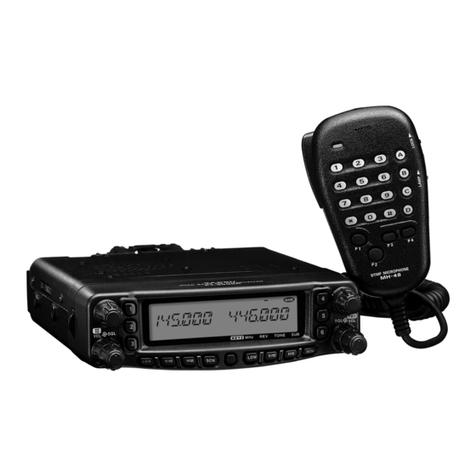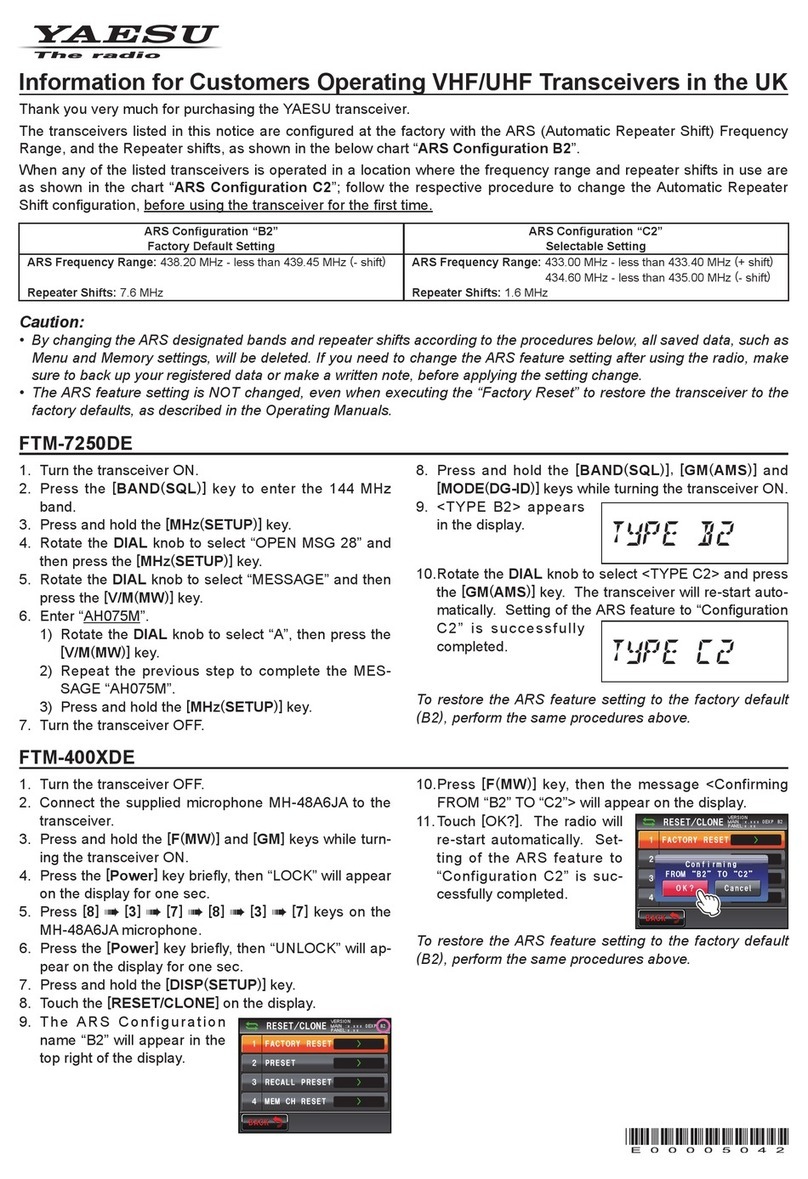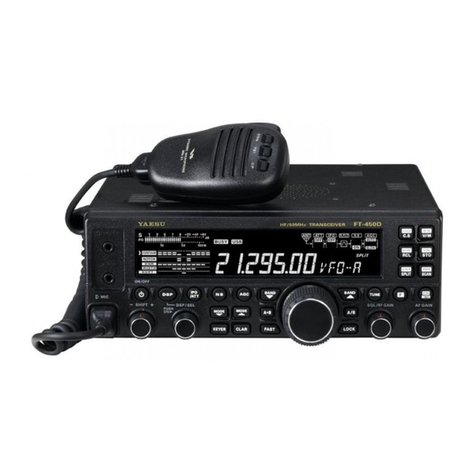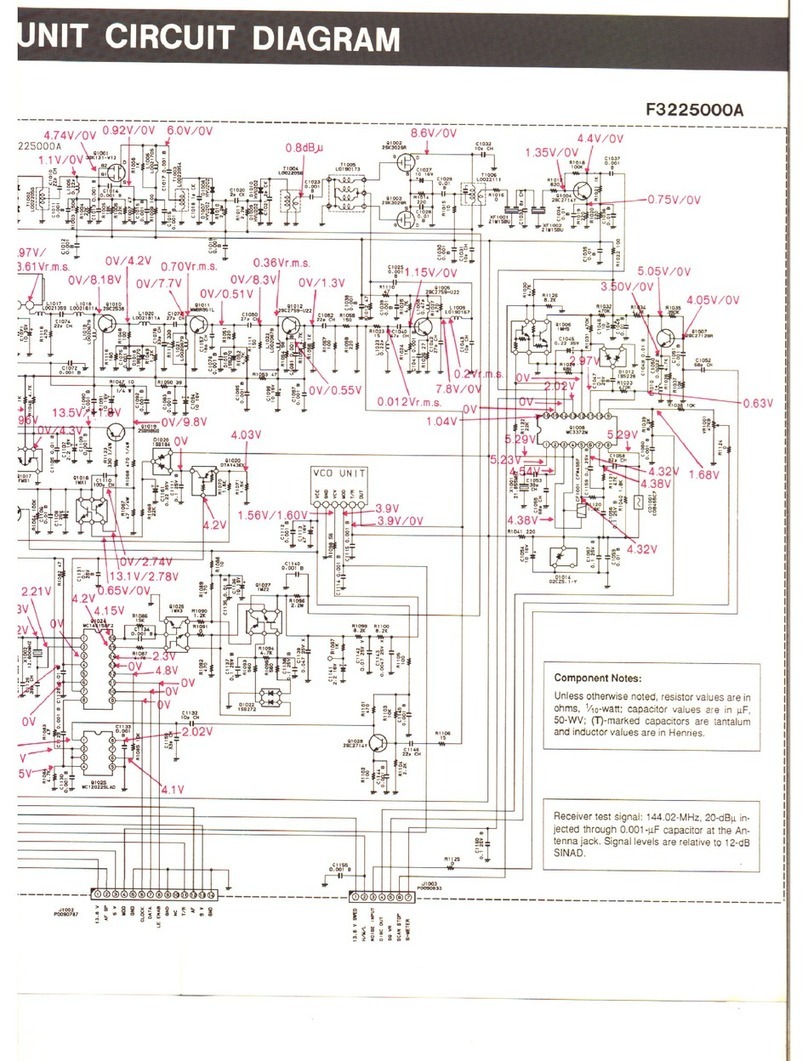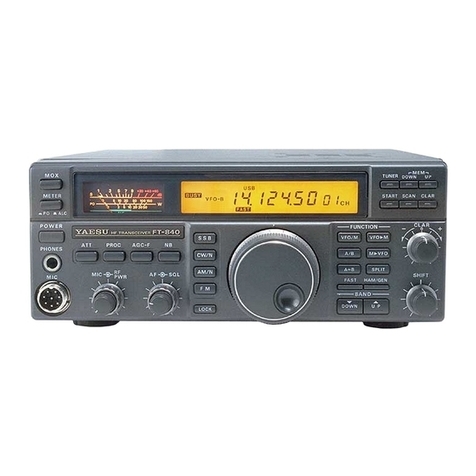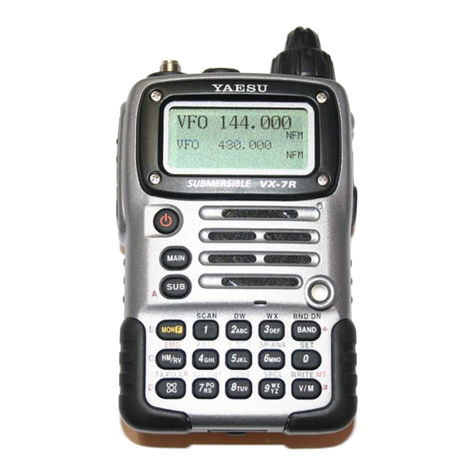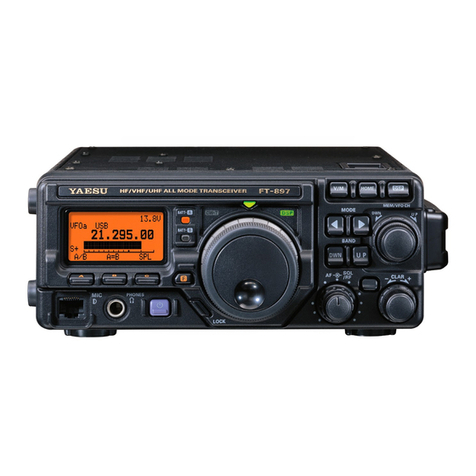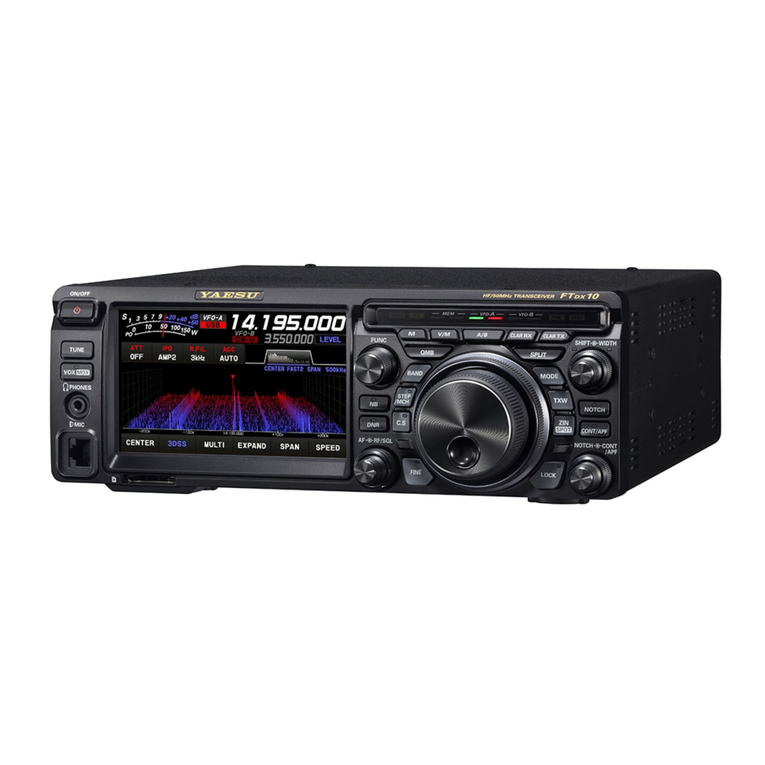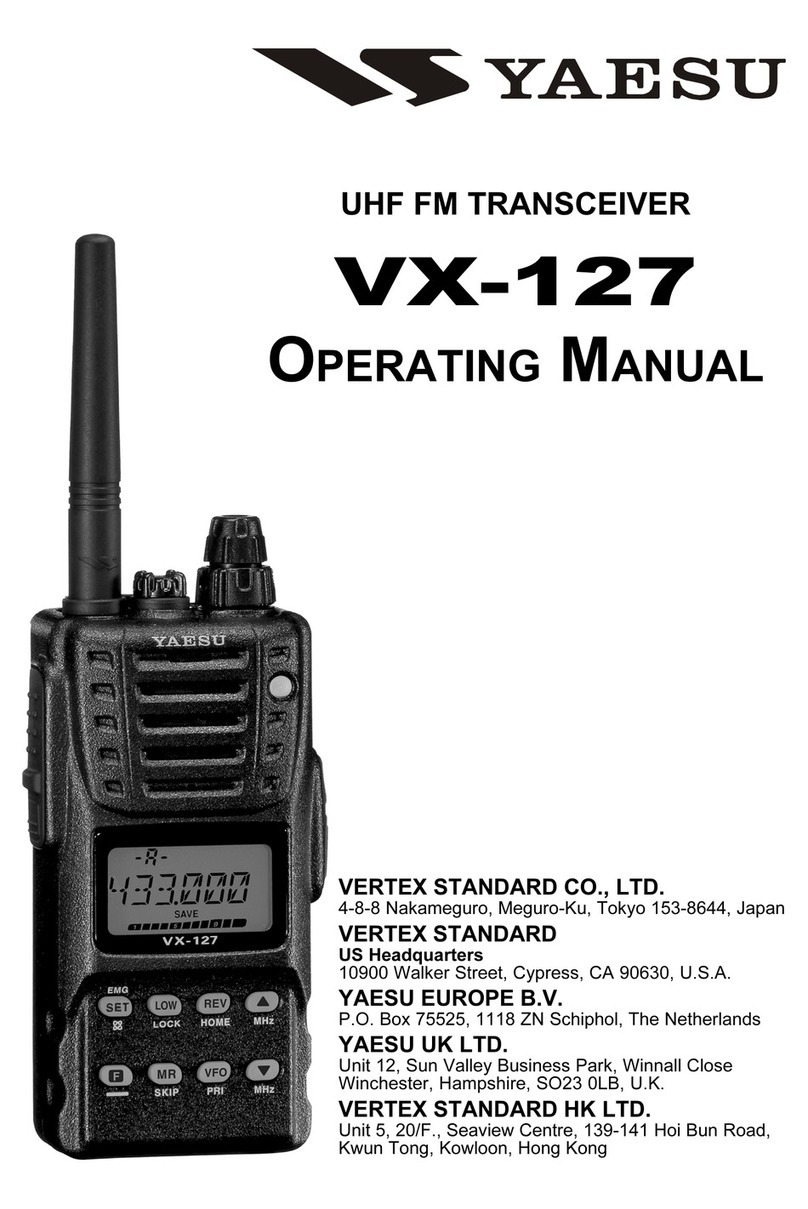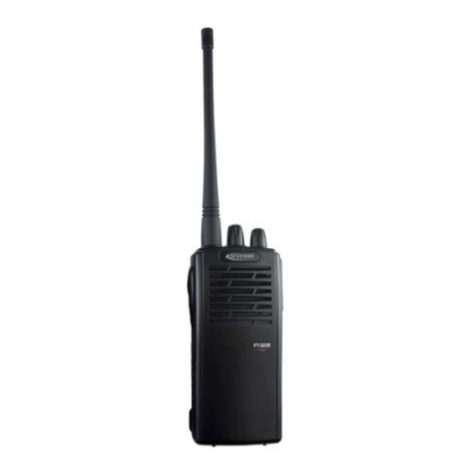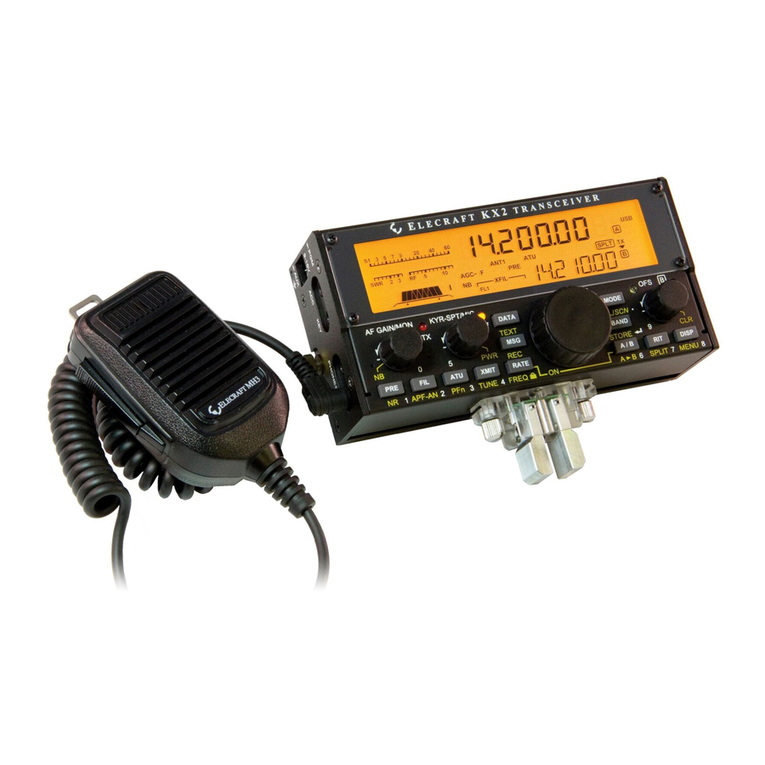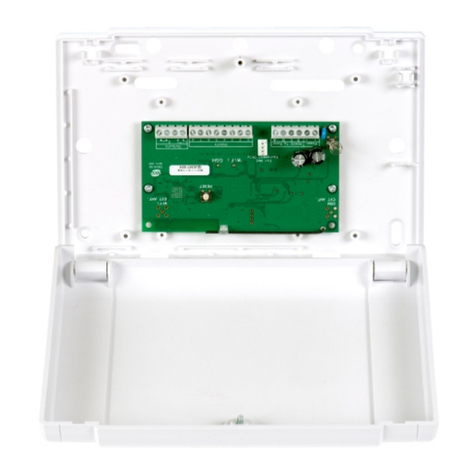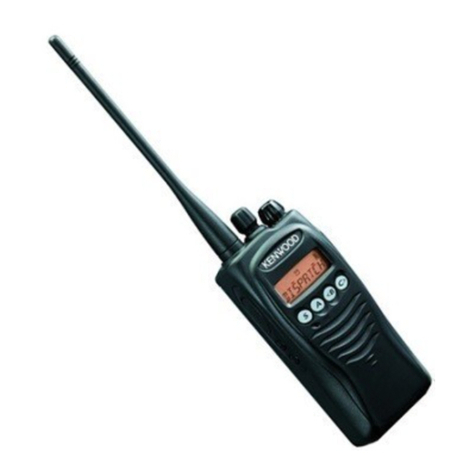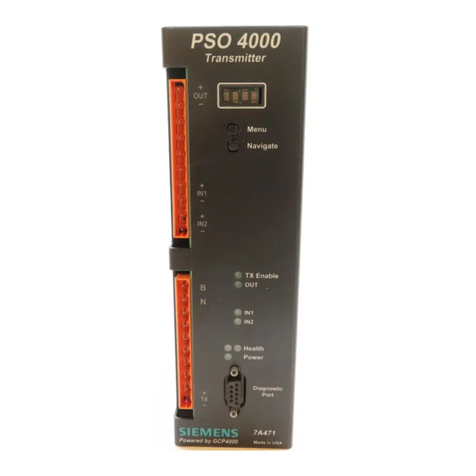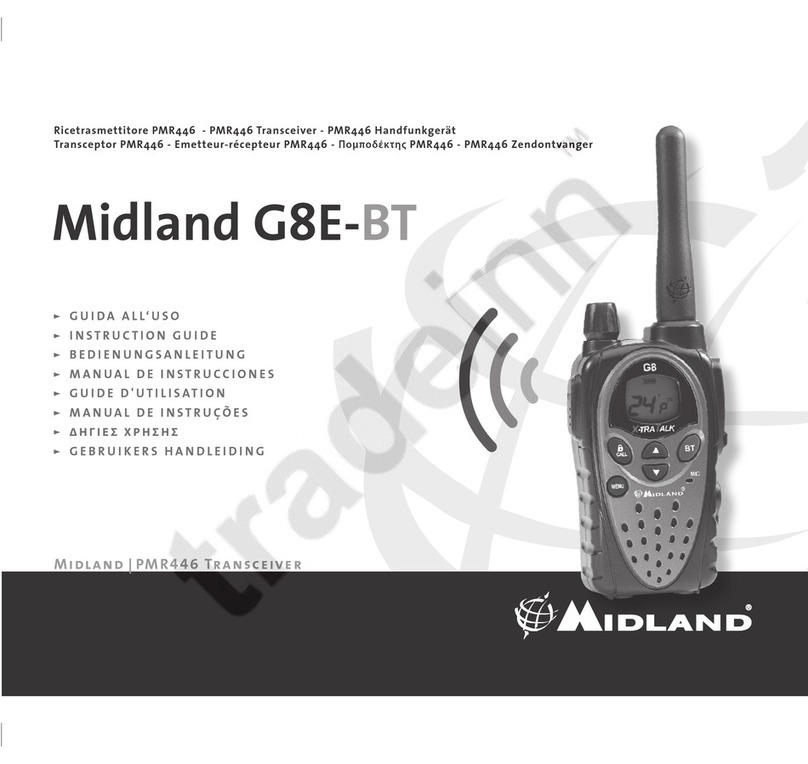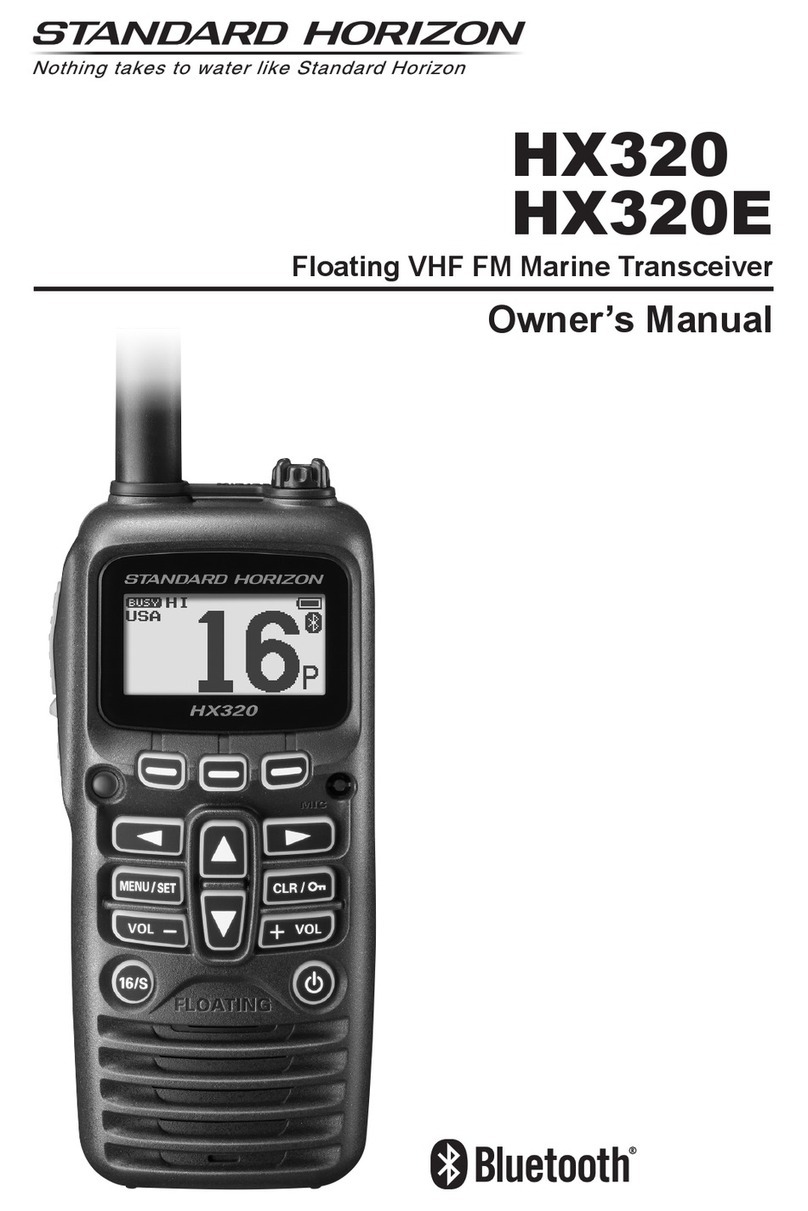General
information
bright, colorful fluorescent discharge display. A
multi-display meter features delayed "peak-hold"
segments and a directional tuning meter to assist
in zeroing-in stations, regardless of mode. The
new expanded tuning scale lets you view relative
clarifier offset or sub-incremental tuning (0.625-,
1.25,2.5- or 5-kHz steps).
Station size is kept to a minimum with the
compact internal
AC
switched-mode power sup-
ply, built-in automatk antenna tuner and elec-
tronic CW keyer. The full-featured keyer has two
iambic keying modes,
a
"bug" emulator, adjust-
able weighting and
ACS
(Automatic Character
Spacing) circuit to improve your CW sending.
Superb receiver performance is a result of di-
rect lineage from the legendary FT-1000D. New
technology Direct Digital Synthesizers (two 10-bit
and three 8-bit) are used inthe local oscillator (all
driven by a single TCXO masteroscillator),result-
ing in extremely fine tuning with thirteen select-
able tuning steps down to 0.62%Hz. Select either
flat or tunedfront end RFamplification (usingfour
FETs ina double push-pull, constant-gain stage),
direct feed to the mixer with IPO (Intercept Point
Optimization), and three levels of RF attenuation
in 6-dB steps.
Two VFOs allow simultaneous reception and
displayof two different frequencies, even indiffer-
ent modes and with different IF bandwidths. Re-
ceiver audio can be cor-npletelyor partially mixed,
or monitored separately in each ear. With inde-
pendent bandwidth and mode selection for each
receiver, plus an option for separate antennas,
diversity reception is possible when both VFBs
are tuned to the same frequency.
To battle
QRM,
the FT-1000MP comes
equippedwith a formidable defense. Finetailoring
of the IFpassbandismadepossiblewith individu-
ally-selected, cascaded 2nd
&
3rd crystal filter
banks. World-renowned Collins mechanical 500-
Hz CW filters are available as options for the Sub
Receiver 2nd
IF,
and Main Receiver 3rd
IF
strip.
An
IF
notch filter and concentric IFshift and width
controls are also provided. The
IF
width circuit
nowallows continuously narrowing receiverpass-
band by selectively moving either the upper or
lowerfilter skirtjust as muchas neededto reduce
QRM while still preserving valuable bandwidth.
Yaesu's new EDSP (Enhanced Digital Signal
Processing) system provides four random-noise
reduction settings, selectable band pass filtering
with adjustable low and high-cutoff skirts, and
transmitted audio enhancement with four voice
response equalization schemes. In addition,
EDSPprovides
an
automaticnotchfilter that iden-
tifiesand attenuatesheterodynes asthey appear.
Separate
keys
are also provided for band se-
lection, and
each
band key accesses two sub-
band VFO freq~ency/mode/filtersettings Per
band, so you can keepseparate
VFO
settingsfor
two different parts of the band, on all bands. In
addition,
99
scannable memories are provided,
each of which stares its own mode and IF filter
selection, in addition
to
frequency, clarifier offset,
and scan status. In addition, five quick-recall
memories can instantlystore operational settings
at the push of a button.
VFO,
band, and memory
scanning now have three scan resume modes
and an auto-write feature that stores active chan-
nel in memories as they are found. The built-in
automatic antennatuner includes 39memoriesof
its own, automatically storing antenna matching
settings for quick automatic recall later. Of course
the front panel keypad can also be usedto key in
operating frequencies directly
A user-customization key allows recalling pre-
configured parameters for often-used operating
setups, or unique operating modes such as FAX
and
SSTV.
The special remotecontroljack allows
push-button control of the full-featured program-
mable CW contest memory keyer, transceiver re-
mote operation and direct frequency entry. CW
enthusiasts can take advantage of the
CW
re-
verse sideband selection, and showave Iisten-
ers will enjoy the AM synchronous tuning mode.
TheYaesu CATsystemprovides a direct link to
the transceiver CPU for computer control and
customizationof tuning, scanning andother oper-
ating functions. The FT-IOOOMP now includes a
built-in data level converter for direction connect
to a personal computer serial port. Special op-
tions for the FT-1000MP include the TCXO-4/6
Temperature Compensated Crystal Oscillator
modules and a wide selection of
IF
filters to com-
plement the eight already installed as standard.
External options include the DVS-2 Digital Voice
Recorder and SP-8 External Loudspeaker with
optional
LL-7
Phone Patch module; the YH-
77STA Stereo Headset; and the MD-100~8~
Desktop Microphone.
Before connecting power, please read the In-
stallation section carefully, heeding the warnings
in that section to avoid damage to the set. After
installation, please take time to work through the
Operation chapter, referring to the Controls
&
Connectors chapter as necessary for details.
